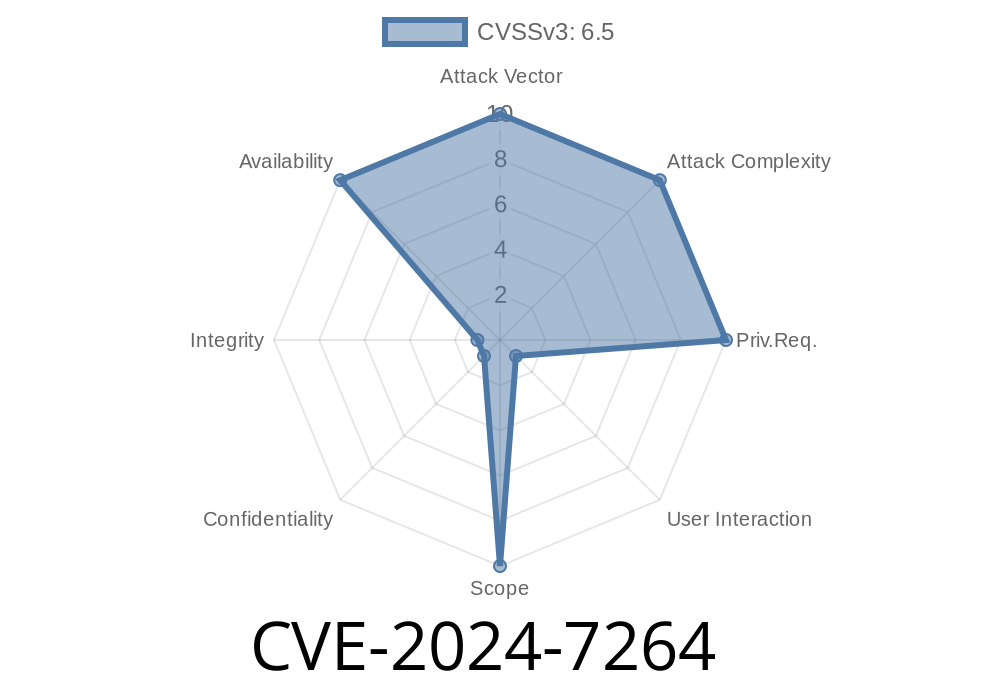Libcurl is a core networking and download library used in countless applications and systems. In early 2024, a serious vulnerability was discovered (CVE-2024-7264) within its ASN.1 parser—specifically in how it parsed Generalized Time fields. This bug not only enables attackers to crash applications, but (with the right conditions) also leak heap memory contents back to clients using libcurl’s certificate info extraction.
In this article, we’ll break down the bug, demonstrate the vulnerable code, show how exploit works, and guide you to the official references and patches. The content is written in clear language and meant to be digestible even if you aren’t a security pro.
What’s the Bug?
When processing X.509 certificates (like HTTPS server certs), libcurl uses a function called GTime2str() to parse ASN.1 Generalized Time fields. If the supplied field isn’t properly formatted, the parser can get confused about the length of the fractional seconds. Rather than getting a sane value, it might get -1. This goes on to be used as a parameter for strlen(), but... that’s not safe!
In practice, this means that strlen() is performed on a pointer somewhere in the heap buffer without a guaranteed null terminator. This can:
Crash the application (segmentation fault)
- Or allow attackers to leak heap data when an app uses the CURLINFO_CERTINFO info, returning heap contents unexpectedly
Vulnerable Code Example
Let’s look at the simplified code resembling libcurl’s vulnerable area (taken and adapted from libcurl’s source):
static CURLcode GTime2str(const unsigned char *asn1, size_t len, char **out)
{
// ...parsing code...
int fraction_length = -1; // <-- if parse fails
// ...
char *fraction_ptr = // ...pointing somewhere in asn1 buffer...
// Bug: fraction_length could be -1, so strlen() used here is unsafe!
size_t real_length = strlen(fraction_ptr);
*out = malloc(real_length + 1);
memcpy(*out, fraction_ptr, real_length);
(*out)[real_length] = '\';
// ...
return CURLE_OK;
}
What’s the big deal?
If the attacker can supply a Generalized Time field with a malformed time fraction, the function will try to strlen() a pointer into the ASN1 buffer which isn’t necessarily null-terminated. This may produce an out-of-bounds read (potential crash) or copy heap junk into what is returned.
How Does This Lead to Data Leaks?
When an application uses libcurl’s CURLINFO_CERTINFO to grab certificate info, this function copies out details about each cert’s fields—including parsed time values. The data returned can now contain unpredictable heap memory, because of the faulty length calculation and missing terminator.
If there was sensitive data on the heap, it might be returned to the caller. In some rare cases, a remote attacker (such as a malicious HTTPS endpoint) could purposely craft such certificates to exploit the vulnerable client and leak data.
Exploitation Scenario Example
Suppose your program uses libcurl to make HTTPS requests and then inspects peer certificate info with:
curl_easy_getinfo(curl, CURLINFO_CERTINFO, &certinfo);
A malicious server sends a certificate with an ASN.1 Generalized Time field that triggers the bug. Result: certinfo contains heap contents from the victim process, potentially exposing secrets or other sensitive data.
Host a TLS server under your control.
2. Serve an X.509 certificate (self-signed or otherwise) where the "notAfter"/"notBefore" fields are improperly constructed—specifically, with a missing or broken time fraction part so that parsing sets fraction_length to -1.
3. Victim connects with a vulnerable libcurl client (pre-patch 8.7.), which requests certificate info (CURLINFO_CERTINFO).
A minimal example with OpenSSL’s asn1parse utility and hex editing can generate a malicious cert
# Generate a basic cert, dump to ASN1, then alter the GeneralizedTime bytes
openssl req -new -x509 -outform der -out badcert.der -keyout bad.key -nodes
openssl asn1parse -in badcert.der -inform DER
# Hex edit the 'notBefore' or 'notAfter' time field to inject a malformed fractional part (e.g., with missing digits or truncated at the '.' character)
# Then serve this with a simple TLS server
# Connect with vulnerable curl and observe either a crash or certinfo outputs with heap memory!
Official References & Fixes
- libcurl Security Advisory for CVE-2024-7264
- CURLINFO_CERTINFO API reference
- libcurl GitHub Commit for Fix (adjust as the real commit for your version)
- CVE details at Mitre
Patch is available in libcurl 8.7. and later. If you use libcurl for connections to potentially hostile servers, update immediately.
Conclusion
CVE-2024-7264 is a classic example of how minor parsing bugs can have outsize impacts—potentially converting a simple crash into a privacy-violating heap disclosure. Reliable patching and careful data validation are essential, especially in widely deployed, open source libraries like libcurl.
Timeline
Published on: 07/31/2024 08:15:02 UTC
Last modified on: 08/12/2024 17:30:51 UTC
